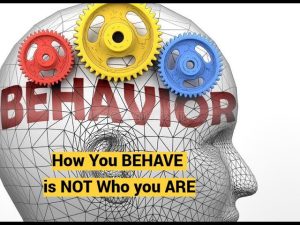Summary: Narcissistic and Borderline Features of Modern Civilization Narcissistic Civilization
1. Overview of Current Civilization’s Pathology
- The speaker highlights that contemporary global civilization exhibits pathological narcissism and borderline personality organization features across various cultures worldwide, making it a global and pathogenic condition fostering mental illness in individuals. [00:00]
2. Key Elements Underpinning Modern Civilization
- Modern postmodern civilization is constructed on three elements: fluidity, purility (adolescent-like behavior/thinking), and ahistoricity (rejection of the past). These elements define the instability and self-creation paradigm of identity in society. [02:20]
3. Definitions and Explanations of the Three Elements
- Fluidity: Constant change and lack of constancy in identity, gender roles, behaviors, and societal norms, promoting continual self-reinvention.
- Purility: Acting and thinking in an adolescent manner, characterized by flux and exploration.
- Ahistoricity: Rejection or ignorance of the past, focusing solely on present self-creation without continuity. These combine to affirm a godlike self-creator model of identity. [03:00]
4. How These Elements Manifest Psychologically
- Fluidity and purility are interrelated and involve ahistoricity, leading to a lack of stable identity due to dissociation and memory disruptions common in narcissism and borderline conditions. This impairs continuous self-awareness and cohesive identity formation. [06:30]
5. Narcissism and Borderline Personality Disorder Parallels
- Both disorders involve identity diffusion — a fragmented, discontinuous sense of self marked by dissociation and impaired reality testing. Narcissists exhibit grandiosity linked with self-creation, while borderline personalities share flux but with less grandiosity. Both are stuck in a perpetual state of adolescence and reject historical continuity. [08:20]
6. Effects of Identity Diffusion on Accountability and Continuity
- Pathological narcissists lack personal continuity and are shocked by accountability for past actions because they perceive themselves as a new, disconnected person each day. This leads to defiance and alienation from consequences. [10:20]
7. Identity versus Identity Confusion Stage (Erik Erikson’s Theory)
- The meeting explores Erikson’s stage of identity versus identity confusion, describing adolescence as a period for social role experimentation. This stage includes psychosocial moratorium, role confusion, and identity crisis that adolescents pass through to form a cohesive identity. Modern adults, however, often suffer from prolonged identity confusion. [12:00]
8. Identity Status Model by James Marcia
- The four identity statuses are detailed:
- Identity Achievement: Exploration and commitment leading to stable identity.
- Moratorium: Exploration without commitment.
- Foreclosure: Commitment without exploration (often imposed by others).
- Diffusion: Neither exploration nor commitment.
- Modern society has moved away from promoting identity achievement and instead glamorizes the other statuses, discouraging commitment. [15:30]
9. Societal Messaging and Values Promoting Pathology
- Modern culture encourages continuous exploration, fluidity, adolescent behavior, narcissism, and the rejection of history, reinforcing instability and identity crisis in both individuals and societies. Commitment is portrayed negatively, which psychologists regard as pathological past adolescence. [18:30]
10. Conclusion: Pathology of Modern Civilization
- The speaker concludes that many features praised by modern civilization — such as constant self-reinvention, fluid identity, and rejection of history — would clinically be considered mental illness if present in individuals over 25. This reflects the pathological nature of the contemporary societal framework itself. [20:50]






